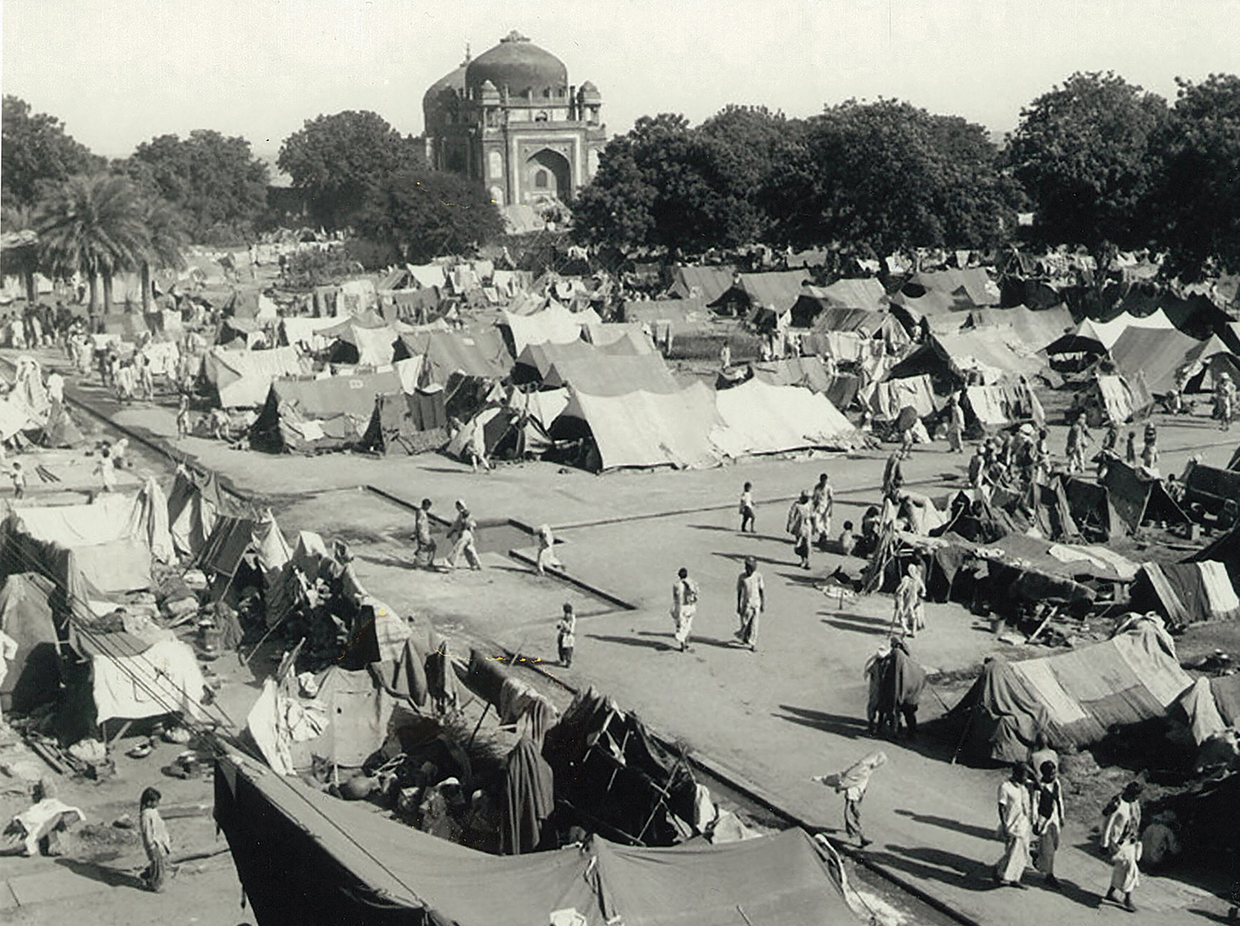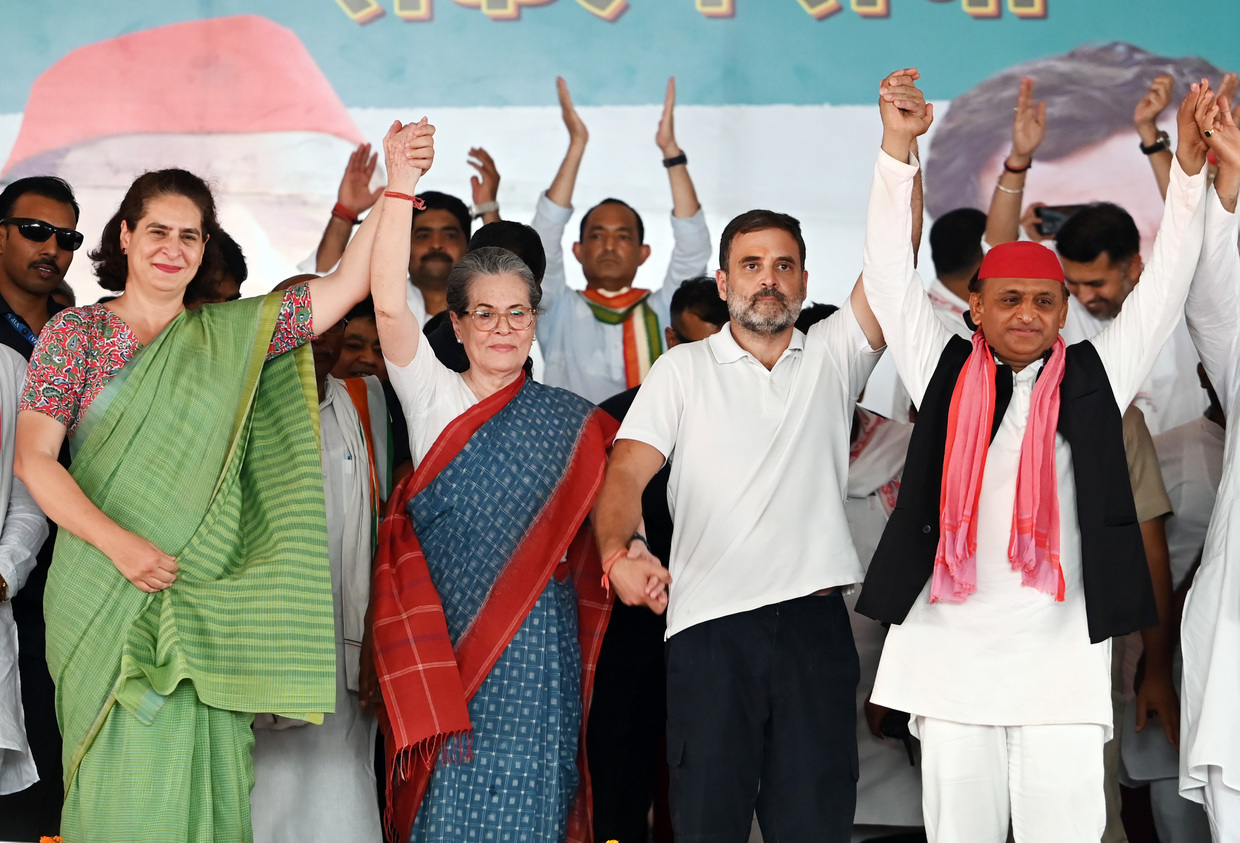How a friendly hug caused uproar in India

Social media was abuzz with videos and photos of a warm meeting between Bangladeshi Prime Minister Sheikh Hasina and Sonia Gandhi of India’s Congress party in New Delhi on June 10.
Both belong to prominent political families that witnessed South Asian nations gain independence from British rule, as well as partition, the subcontinent’s changing map, and the assassination of family members.
But there is a deeper personal bond, and those privy to their meeting called it “the reunion of a family connection.” Two senior diplomats from Bangladesh agreed with that description.
Sheikh Hasina was in New Delhi as a state guest for Prime Minister Narendra Modi’s swearing-in ceremony on Sunday, June 9, when he assumed office for a third consecutive term. She is a five-term PM and Sonia Gandhi is the Congress party’s president, having led a coalition that ruled India from 2004 to 2014.
Sonia called to Sheikh Hasina at her suite in a New Delhi hotel, along with daughter Priyanka and son Rahul, both of whom recently emerged as important political figures in India. Rahul, the face of INDIA bloc, which rivalled the Modi-led Bharatiya Janata Party in the recent election, was credited with enlarging the opposition following a decade of Modi’s overwhelming majority.
That set off chatter about why the two women were meeting, including speculation as to whether the Bangladeshi prime minister was snubbing Modi.
Diplomats differ.
“Sheikh Hasina spent six years in political asylum in New Delhi between 1975 and 1981 and she has strong ties with the Gandhi family,” a Bangladeshi diplomat told RT. “This was a personal meeting between old family friends and nothing more should be read into it.”
Those in the know say Sheikh Hasina met with the Gandhis alone, without aides or staff.

The birth of ties
Their respective family histories are intertwined with political events that have shaped and reshaped South Asia’s political map. Both Jawaharlal Nehru, India’s first PM and also Rahul and Priyanka’s great-grandfather, and Sheikh Mujibur Rehman, Sheikh Hasina’s father, popularly known as Mujib, were prominent figures during the formative years of India and Pakistan with different degrees of influence.
The Gandhis are successors to Nehru’s political legacy and Sheikh Hasina succeeded her late father as leader of the Awami League, Bangladesh’s longest-ruling political party.
Nehru was a key figure in India’s freedom movement. Mujib was then a young student leader of the Indian Muslim League, which favoured the creation of a separate Muslim state.
British India was divided into two nations following independence in 1947, namely India and Pakistan. Pakistan had two wings, eastern and western, and the shortest connection between the two was through Indian airspace, with New Delhi at its center.

In the 25 years following independence, leaders of West Pakistan neglected the development of East Pakistan, and tried to impose a homogenous Islamist culture throughout the country.
In 1962, Sheikh Mujibur Rahman reached out to Nehru for India’s help with the liberation of East Pakistan, which was unable to align with a succession of dictatorial rulers who were not keen to switch to a full-fledged democracy. Nehru declined his request – one of the reasons was India’s hesitance to engage with Pakistan’s ally, China, against whom India had suffered a humiliating defeat in a war that same year.
Following Nehru’s death, his daughter, Indira Gandhi, took over as leader of the Congress party and then as PM following the mysterious death of Lal Bahadur Shastri (Nehru’s immediate successor as PM) in Tashkent of the erstwhile Union of Soviet Socialist Republics (USSR).

From two nations to three
Pakistan held its first general election in 1970. Mujib’s Awami League swept the polls but the West Pakistanis refused to hand over power, resulting in a deadlock that was broken by a bloody genocide in March 1971. The Pakistani Army and later armed vigilante groups killed and raped hundreds of thousands of Bengalis in East Pakistan and forced millions to flee the country. Mujib was placed under arrest and shipped off to Pakistan.
The East Pakistanis, led by elected leaders of the Awami League, responded with a liberation war in which Bengali military personnel of the Pakistan Army fought alongside farmers, laborers, teachers, students, shopkeepers, homemakers, and teenagers.
Indira Gandhi was swift to support the growing liberation movement with covert support through Indian security agencies. Its key players were the external intelligence agency, the Research and Analysis Wing (R&AW), and Indian border guards, the Border Security Force (BSF).
Over a nine-month period, they trained and armed Bangladeshi guerrillas and set up their government-in-exile while New Delhi ran diplomatic interference. Supporting the creation of Bangladesh suited India’s diplomatic, political and security strategy.
Indira Gandhi and the Bangladeshi government-in-exile was vocal about how the US had supported the genocide of a people. Regardless, President Richard Nixon and his national security adviser, Henry Kissinger, continued to supply financial and military aid and weapons to Pakistan. Kissinger used Pakistan as a plank to reach out to China.
Nixon and Kissinger tried to bully Indira Gandhi during a meeting in the Oval Office. She snubbed them and signed a cooperation treaty with the USSR, which backed India in its support for cleaving Pakistan. The Indo-Soviet Treaty of Peace, Friendship and Cooperation of 1971 became a robust counterweight to the Washington-Beijing-Islamabad axis, providing New Delhi with both diplomatic and military resources in its battle against the combined might of the US, UK and China.
Neither the US nor China sent its military forces to fight Bangladesh or India in South Asia when Indian soldiers, tanks, warships and aircraft crossed Pakistan’s borders.
An unconditional surrender by the Pakistani Army on December 16, 1971 concluded both a 13-day war between India, Bangladesh and Pakistan, and the nine-month-long Bangladesh Liberation War.

Assassinations
Mujib returned to a democratic and free Bangladesh in January 1972 as prime minister. He would have a short and tumultuous rule, ended bluntly when he and several members of his family were gunned down by Bangladeshi military leaders on August 15, 1975.
Sheikh Hasina was in Europe, living with her nuclear physicist husband, and escaped the assassination, which did not spare the women and children of Mujib’s family. The killing of Mujib was followed by coups and counter-coups by military leaders.
It was then that Indira Gandhi offered Sheikh Hasina political asylum. She accepted, and her family took up residence on Pandara Road in New Delhi. It was not far from the Gandhi residence, where Sheikh Hasina would be a regular guest.
Neither Indira Gandhi’s eldest son Rajiv nor his spouse Sonia had a role in Indian politics at the time, and their children, Rahul and Priyanka, were not even teenagers. Hasina’s husband Wajed Mian had a job with India’s nuclear research center.

Meanwhile, India covertly supported Bangladeshi armed groups who fought an insurgency against the military dictatorship. In 1981, Sheikh Hasina returned to Bangladesh as the Awami League chief, leading the opposition to the military dictatorship.
Three years later, Indira Gandhi was assassinated by Sikh bodyguards as purported retribution for her government’s launch of a military attack on the revered Golden Temple in Amritsar.
Indira Gandhi’s son Rajiv assumed control of the Congress party, which was re-elected to power with the highest-ever majority that the country had seen.
Rajiv Gandhi changed tack on India’s diplomatic relations and came closer to the USA, even while cleaning up the world’s worst industrial crisis – the Bhopal Gas tragedy.
This established a direct link between the Indian PM’s office and the US president’s Oval Office. This growing closeness saw India adopt several pro-US policies, as well as Western jurisprudential legislation that has outlived successive governments.
Indian opposition parties won the next election in 1989, ejecting Rajiv Gandhi from power, and launching India into a fractious democracy. In 1991, Bangladesh returned to democracy, with Sheikh Hasina leading the opposition benches.
That same year, a Sri Lankan Tamil rebel in a suicide vest killed Rajiv Gandhi at a political event.
Women in power
Sonia Gandhi did not show any interest in joining politics until 1998, when she was elected by Indira and Rajiv loyalists as president of the Congress – a decision that splintered the party. Six years later, the Congress came to power in India’s center and stayed there with the help of allies for a decade.

During that decade (2004-2014), Sonia Gandhi did not take over as PM but put an economist and former bureaucrat, Dr Manmohan Singh, in charge of running the country’s affairs. The Congress-led government strengthened economic and diplomatic ties with the US while maintaining the Indo-Russian relationship (the legacy of the Indo-Soviet alliance built by Nehru and strengthened by Indira Gandhi).
Sheikh Hasina became Bangladesh’s PM for the second time in 2009 (the first was 1996-2001). During those years, she met with Sonia Gandhi along with Rahul and Priyanka during state visits, while their countries continued close regional cooperation.
Maintaining ties with India’s immediate neighbors is important for the Modi government and part of its foreign policy outlook. The Sonia-Hasina meeting should be a cue to pick up from. A lot of blood was spilt to curate a bond despite fractures and lines left by British imperialists.














